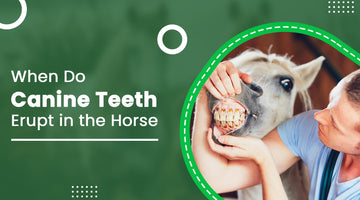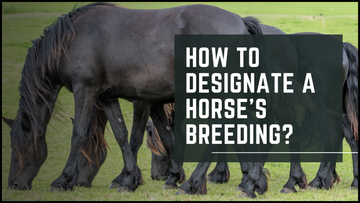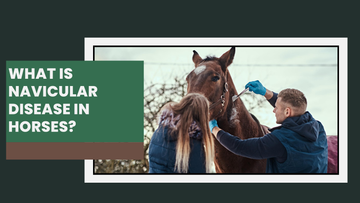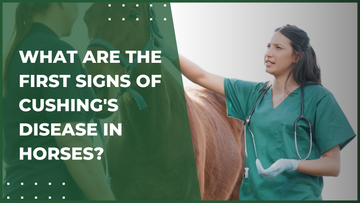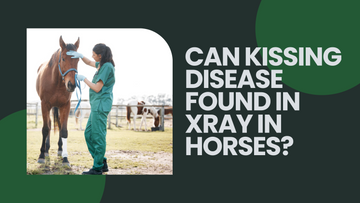Horses are famous all over the globe for their beauty, strength, and elegance, but did you know their teeth can tell you so much more than just how old they are? We are talking about canine teeth, the sharp pointy, often overlooked bits that hold the key to a horse’s health, comfort, and overall energy.
When it comes to equine tooth care, knowing when do canine teeth erupt in the horse is essential for every big tooth horse owner, trainer, and vet to know. These sharp teeth don’t just help with determining their horse teeth age but also play an important role in ensuring that your horse is comfortable and healthy.
These teeth may look smaller compared to the size of the jaw, but they play a much larger role than their size for horse dentition If they are not managed correctly, they can cause anything from gum irritation to biting issues to the horse.
Understanding Equine Canine Teeth
Do horses have canine teeth? In this section of the blog, we will understand the canine teeth in horses and the difference between equine canine teeth and wolf teeth.
What Are Canine Teeth?
Equine canine teeth are the pointy teeth between the horse front teeth (incisors) and horses back teeth (molars) of the horse. They are spade-shaped and sharp, but they are not used for chewing. They don’t serve a purpose in eating or grinding food, but they can cause various horse canine teeth problems if not managed properly.
Canine teeth in horses usually show up in males when they are around 4 to 6 years of age. Females rarely have them, as about 75% of them won’t develop canine teeth in horses at all, and even if they do, they are very small in size.
How many teeth do horses have? Horses, just like human beings have two sets of teeth in their whole lifetime, be they deciduous or permanent teeth in later stages. Adult horses typically have around 36 to 44 teeth including horses incisors, depending on gender and development.
What is the Difference Between Canine Teeths and Wolf Cuts?
You may be thinking, are wolf teeth in horses the same as canine teeth? While both of these are found in horses, they are far from being similar.
Wolf teeth are small vestigial premolars that sit in front of the first molar, and canine teeth in horses sit between the horse front teeth and molars. Wolf teeth are harmless on their own but can be a problem with biting.
They are very often removed from horses that have to wear a bridle as they can cause interference with the different horse equipment. On the other hand, canine teeth do not cause worry for the same.
When does the canine tooth erupt in horses?
In this section of the blog, we will learn about when do canine teeth erupt in the horse, the factors that influence this timeline, and how it can influence the health and behavior of the horse.

General Eruption Age:
Horses develop canine teeth between 4-6 years of age. This growth pattern is most common in horse canine teeth age. For most males, these sharp spade-shaped teeth will appear as they begin to mature as old horse teeth. Here is a galvayne's groove horse teeth age chart for better understanding:
Variation in Eruption by Gender and Breed:
Almost all male horses develop canine teeth, leaving female horses to the exception. These small teeth can be absent or sometimes barely visible in females. Some breeds may also show slight variations in the timing of the eruption of these teeth. Knowing these breed-specific variations can help owners and trainers plan for their dental checkups.
Potential Issues During Eruption:
Eruption of canine teeth in horses can be very uncomfortable, especially when they are between the ages of 4-6. During this period, horses can feel pain, which can cause changes in their behavior. You may see signs like increased salivation, head tossing, or a refusal to accept the food.
These discomforts come from the process of the teeth breaking through the gums, which can be very painful for them. Owners or trainers should keep an eye out for these signs of discomfort and schedule dental care to help ease the process in the future.
Best Practices for Managing Horse Canine Teeth
To efficiently manage the canine teeth of your beloved horse with teeth, it is very essential to practice the best practices like a ritual. These practices will ensure their health, comfort, and performance. Here is how you do it:

Regular Dental Examinations
-
Routine Checkups: Get your horse checked every 6-12 months. Especially when the canines start to erupt. Regular checks allow you to catch any irregularities that can cause discomfort to your aging horses by teeth.
-
Early Intervention: Catching the dental issues of your horse early on will prevent problems that can affect your horse’s ability to eat or wear different equipment comfortably.
Trimming and Rasping Techniques
-
Rasping (or Floating): Rasping is the process of smoothing out the sharp edges of the horse’s equine canine teeth. A dental technician uses either manual tools or motorized equipment to rasp the teeth perfectly.
-
Sharp Points: Sharp points are on the outside of the upper teeth and inside of the lower teeth. Rasping gets rid of these points
-
Comfort: Rasping regularly will ensure that your horse can eat and wear a bridle or other equipment without any pain or soreness.

Conclusion
In conclusion, the canine teeth in horses might not be the first thing that will come to your mind when it comes to the health of your horse. Their sharp canine teeth can create a big difference in the behavior, performance, and feeling of the horse. These canines start making an appearance when the horse is between the ages of 4 and 6 years old. This period can become a little uncomfortable for your equine friend, but with the right care and regular checkups, you can keep your horse's canine in great shape.
You can think of it like this, regular checkups and a little rasping routine here and there can go a long way in making sure that your horse stays comfortable while looking as glamorous as ever. So, the next time you are spending a good time with your horse, you should take a moment to give your canine proper care and love.
Concerned about your horse's dental health? Visit The Epic Animal for expert advice and top-quality products to keep your horse comfortable and happy. Shop now!
FAQs
-
Are horses born with teeth?
No, horses aren’t born with teeth. Foals are born toothless but start to develop their baby teeth (milk teeth) within hours of birth. -
How many teeth does a horse have?
An adult horse has 36 to 44 teeth depending on sex and whether they have canines or wolf teeth. -
How to tell a horse's age by teeth?
You can estimate a horse’s age by looking at the eruption and wear of their teeth. Key indicators are incisors, the shape of the teeth, and permanent teeth, which erupt at specific ages. -
Should canine teeth in horses be removed?
Canine teeth in horses typically do not need to be removed unless they cause discomfort to the horse.
Read More Blogs Here:

How Much Do Horses Weigh? Understanding Horse Weight

